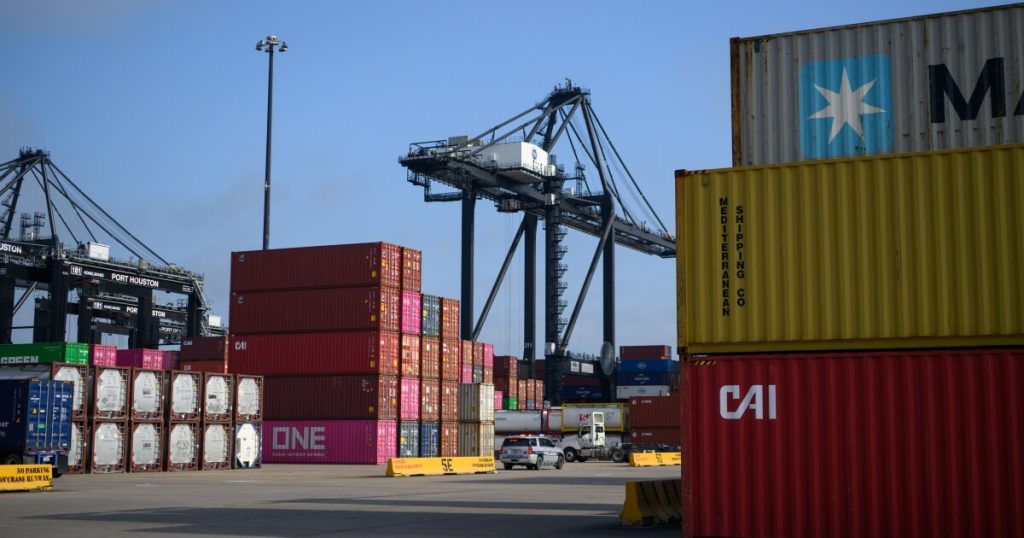Major US trading partners hurried over the weekend to secure trade deals or lobby for extra time, while Treasury Secretary Scott Bessent indicated that some countries lacking an agreement by the deadline Wednesday will have the option of a three-week extension to negotiate.
READ MORE:
“We’re going to be very busy over the next 72 hours,” Bessent
In interviews with two programs Sunday, Bessent signaled that letters President Donald Trump is poised to send trading partners this week aren’t the final word on countries’ immediate tariff rates. The levies will kick in Aug. 1, so there’s still time for those that aren’t close to an agreement to bring offers to the table, he said.
“Tariffs go into effect Aug. 1, but the president is setting the rates and the deals right now,” Commerce Secretary Howard Lutnick told reporters alongside Trump later Sunday while boarding the presidential plane back to Washington.
Trump said tariff letters to between 12 and 15 trading partners would start going out on Monday, while suggesting that some agreements are in the offing, too. “I think we’ll have most countries done by July 9 — either a letter or a deal,” he said.
READ MORE:
For weeks, the administration has signaled that Trump’s reciprocal tariffs will revert on July 9 to their higher April 2 levels for countries that fail to secure an accord aimed at reducing US trade imbalances. Bessent acknowledged that the sheer number of ongoing discussions is complicating the final stages.
“There’s a lot of congestion going into the home stretch,” the Treasury chief said on Fox News Sunday. “So by telling our trading partners that they could boomerang back to the April 2 date, I think it’s really going to move things along the next couple of days and weeks.”
Trump told reporters over the Fourth of July weekend that he “signed some letters and they’ll go out on Monday – probably 12” initially. He declined to identify the recipients, saying his directives involve “different amounts of money, different amounts of tariffs and somewhat different statements.”
Speaking to CNN, Bessent declined to characterize Aug. 1 as the new deadline. “If you want to speed things up, have at it,” he said about countries that receive a letter. “If you want to go back to the old rate, that’s your choice.”
READ MORE:
Bessent said the focus is on 18 major trading partners and several big agreements are close, even though “there’s a lot of foot-dragging on the other side.” Trump officials have stated for weeks that multiple accords are imminent, but only a limited framework with the UK, a
Trump and Bessent’s latest remarks suggest talks remain fluid and deals are elusive three days before the original deadline. The Treasury secretary said Washington is applying maximum pressure on trading partners, and there’s been “very good progress” in its discussions with the European Union — a 27-nation bloc that accounts for almost one-fifth of total US goods trade.
The letters initially were supposed to go out on July 4 with a tariff imposition date of Aug. 1, based on Trump’s earlier comments. Meanwhile, US officials have been busily negotiating through the holiday weekend, including with Japan, South Korea, the EU, India and Vietnam.
One of Trump’s signature moves in dealmaking is a unilateral threat when negotiations reach critical stages, so it’s unclear whether the letters he describes are real, or merely meant to strike fear into trading partners still reluctant to offer last-minute concessions.
After Trump announced an agreement with Vietnam last week, the country’s Ministry of Foreign Affairs said negotiators were still coordinating with their US counterparts to
While an interim accord with India was also expected to be reached, officials in New Delhi have signaled a
Seeking an Extension
Also concerned about auto tariffs is South Korea, which has discussed with US officials
Basking in a major
The initial rollout of Trump’s so-called reciprocal tariffs in early April sparked fears of a US recession and sent markets tumbling. That prompted the White House to backpedal with a 90-day freeze of those rates at 10% through July 9.
On top of the additional costs that tariffs create for US companies that purchase goods from abroad, domestic exporters face the possibility of retaliation from economies, including the EU.
EU member states were briefed on the status of negotiations on Friday after a round of talks in Washington last week ,and were told that a technical agreement in principle was close, Bloomberg News previously
Japan’s Stance
Japanese Prime Minister Shigeru Ishiba said the country is prepared for all possible tariff scenarios. Speaking on Fuji TV’s “Sunday News The Prime” program, he said Japan — another major auto producer trying to avoid Trump’s tariffs — is ready to “stand firm” and defend its interests while anticipating every possible situation.
Cambodia’s government said in a statement on Friday that it had agreed with the US on a framework agreement that will be released publicly soon, with a pledge to continue cooperating closely. At 49%, Cambodia’s threatened reciprocal tariff was among Trump’s highest. The Southeast Asian nation is a sizable exporter of textiles and footwear to the US.
Last week Indonesia signaled confidence it is
Thailand is making a

